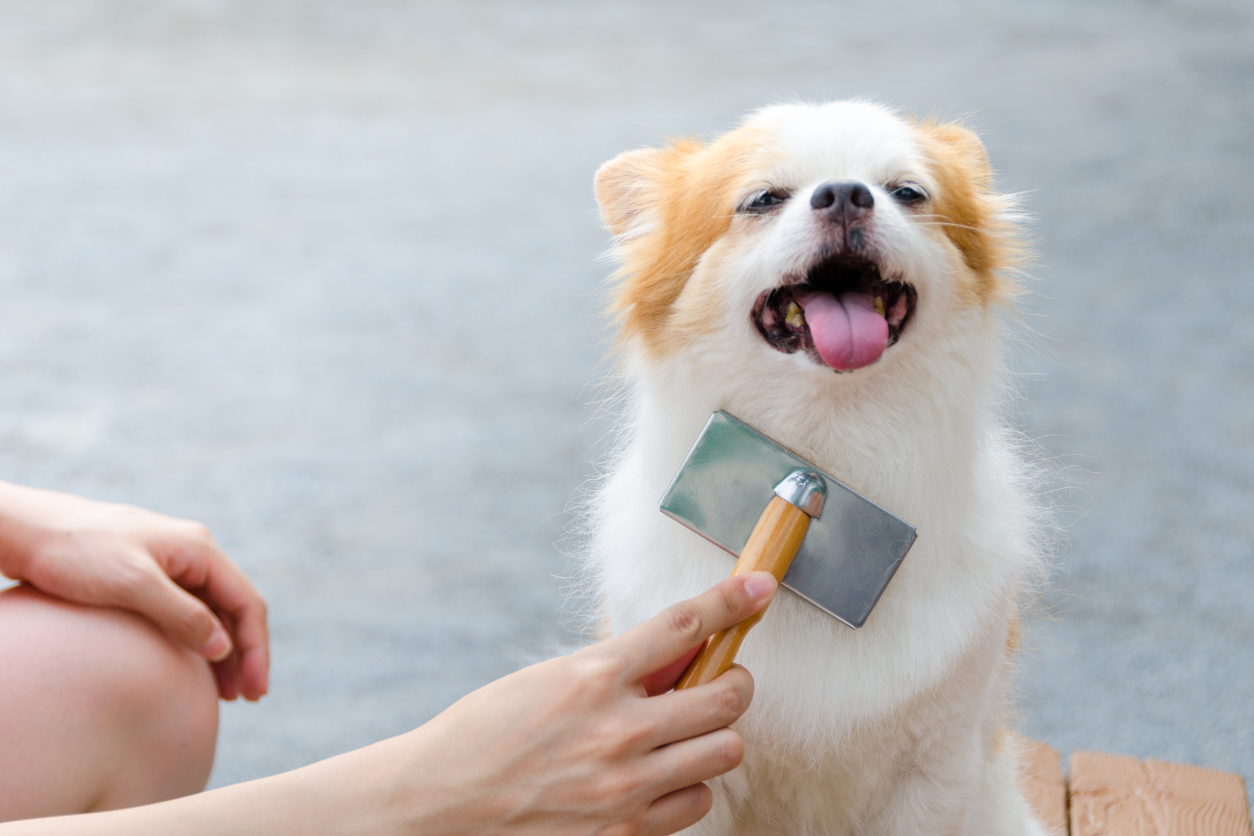Grooming Tips To Keep Your Pup’s Dog Hair Silky Smooth

When you’re cuddling with your dog, there’s nothing quite like feeling that soft, shiny coat. It’s the sign of a healthy pet, and I think we’d all agree we want our furry friends to look and feel their best. Keeping your pup’s dog hair in top condition isn’t just about aesthetics. It’s also a good indicator of their overall health. A dull, dry coat can be a sign of underlying issues, from poor nutrition to skin problems.
Achieving and maintaining that lustrous coat can sometimes seem more complicated than it should be. Between all the products, grooming tools, and dietary advice out there, it’s easy to feel overwhelmed. Trust me, I’ve been there, and through trial and error, I’ve picked up a few grooming tricks that make a world of difference.
Related: Keep Your Pup Entertained During At-Home Grooming
Importance of Regular Grooming
Regular grooming is essential for keeping your dog’s coat looking its best. It’s not just about brushing out tangles; it’s about keeping their skin healthy, preventing matting, and reducing shedding. How often you groom your dog depends on their breed, coat type, and lifestyle. Dogs with long, flowing coats typically require more frequent grooming than those with short, sleek fur.
Brushing your dog’s coat helps to distribute natural oils from their skin throughout the fur, giving it a natural shine. It also removes loose hair and prevents the formation of mats and tangles. Mats can be uncomfortable for your dog, pulling at their skin and sometimes even causing sores. By staying on top of grooming, you’re not only enhancing their coat’s appearance but also ensuring their comfort.
Another aspect of grooming that often gets overlooked is the importance of keeping your dog’s coat clean. Bathing should be done as needed based on your dog’s lifestyle and coat type. However, over-bathing can strip their coat of natural oils, leading to dryness. Choosing a gentle, dog-specific shampoo can help maintain the right balance, keeping their coat clean without over-drying.
Related: How To Cut Dog Hair With Clippers
Diet and Nutrition for Healthy Dog Hair
A healthy coat starts from the inside out, and nutrition plays a crucial role in this. Just like us, dogs need a balanced diet rich in essential nutrients to maintain healthy skin and a shiny coat. Protein is a key player here, as it helps to strengthen hair follicles and support overall skin health.
Omega-3 and Omega-6 fatty acids are also important. They help to keep your dog’s coat glossy and can reduce inflammation, which is particularly beneficial for dogs with sensitive or itchy skin. You can find these healthy fats in fish oils and flaxseed, and many high-quality dog foods include them as part of their formula.
It’s worth mentioning that if your dog’s coat is looking a bit lackluster, it might be worth reviewing their diet with your veterinarian. Sometimes, a simple change in food or the addition of a supplement can make a significant difference. But always consult with a professional before making any major changes to ensure your dog’s nutritional needs are being met.
Just as important as diet is making sure your dog stays hydrated. Water is vital for every bodily function, including maintaining healthy skin and fur. If your dog’s coat is dry or brittle, it might be a sign that they’re not getting enough water. Always provide fresh, clean water, and encourage your dog to drink regularly, especially during hot weather or after exercise.
Environmental factors also play a role in the condition of your dog’s coat. Exposure to harsh weather, like excessive sun, wind, or cold, can affect the skin and fur. Consider protecting your dog from extreme conditions by providing shelter and appropriate clothing when necessary. In winter, using a humidifier indoors can prevent the air from becoming too dry, which can help maintain skin and coat health.
Common Grooming Mistakes
Even with the best intentions, it’s easy to make mistakes when grooming your dog. One common error is using the wrong type of brush for your dog’s coat. Different dog hair requires different tools, and using the wrong one can do more harm than good. For example, slicker brushes work well for dogs with thick, long fur, while bristle brushes are great for short-haired breeds.
Another mistake is neglecting to check for parasites like fleas and ticks during grooming sessions. These pests can not only cause discomfort but can also lead to serious health issues if left untreated. Regular grooming is a perfect opportunity to check for any unwanted guests and address them promptly with appropriate treatments.
Lastly, it’s important not to rush the grooming process. Taking your time and being gentle will help your dog feel more comfortable and less stressed. If grooming becomes a negative experience, your dog may become resistant to it in the future. Instead, try to make it a bonding time, using lots of praise and treats to create a positive association with the process.
Maintaining a healthy, shiny coat for your dog involves a combination of regular grooming, proper nutrition, and attention to environmental factors. It might seem like a lot at first, but once you get into a routine, it becomes second nature. Plus, the rewards are worth it—your dog will not only look fantastic, but they’ll also feel great.
Your Pet’s Best Interest, Always
At Pet Institute, we take pet care seriously. We're dedicated to transparency, impartiality, and the well-being of your pets in every article, review, and recommendation we provide. Our unwavering commitment to these principles ensures that you, our valued reader, always receive reliable and unbiased information. Let us be your trusted guide in the world of pet care and companionship.